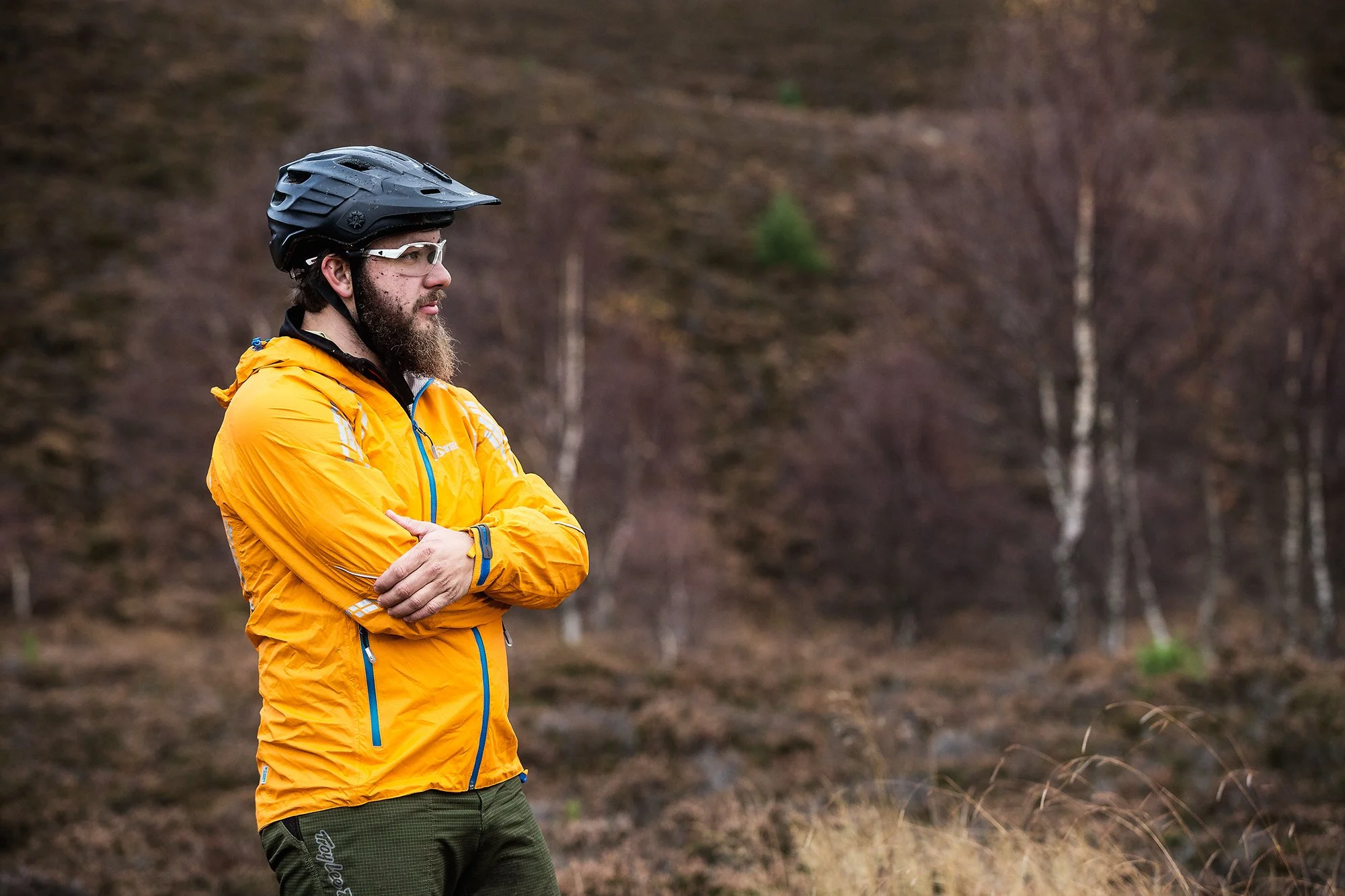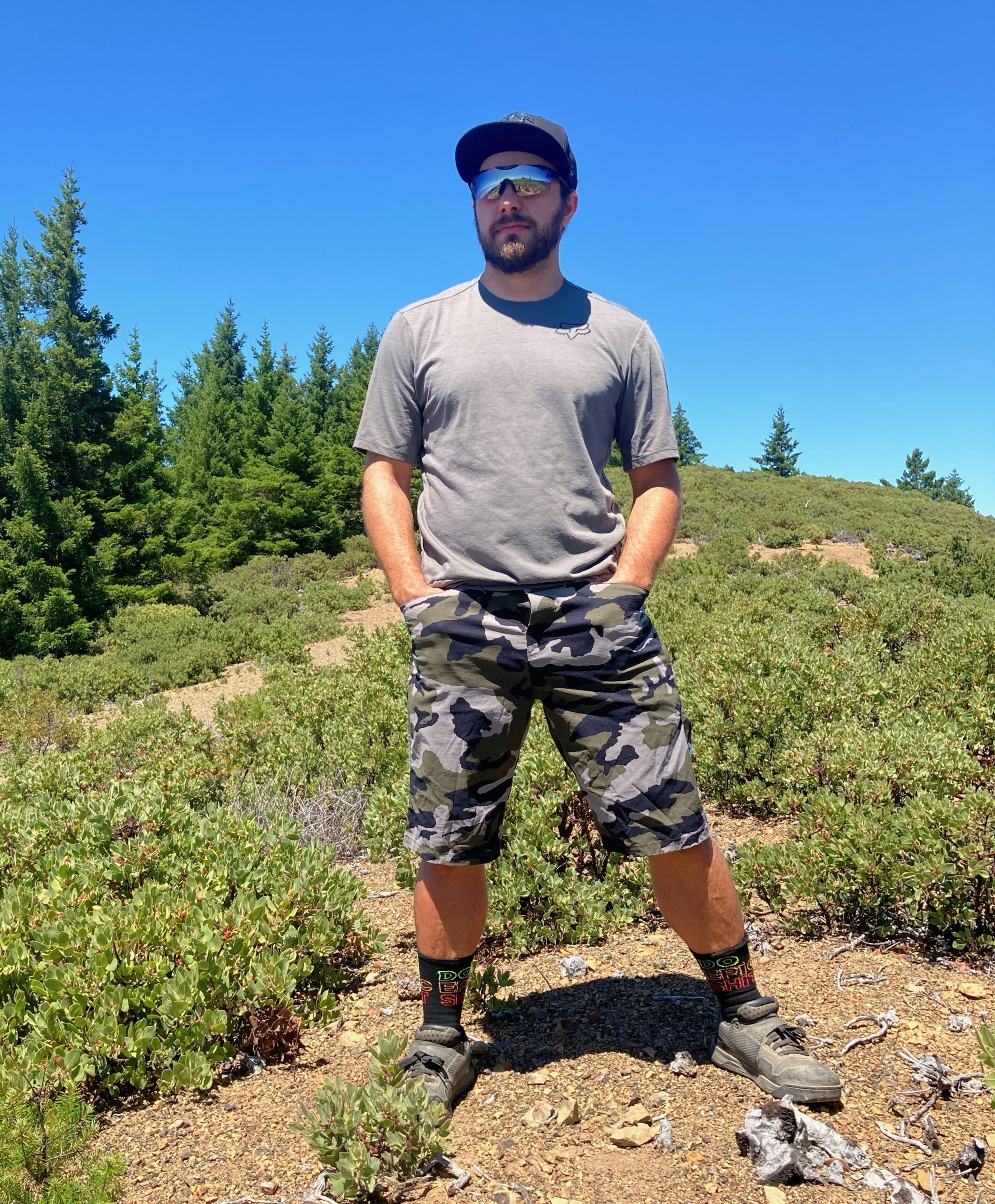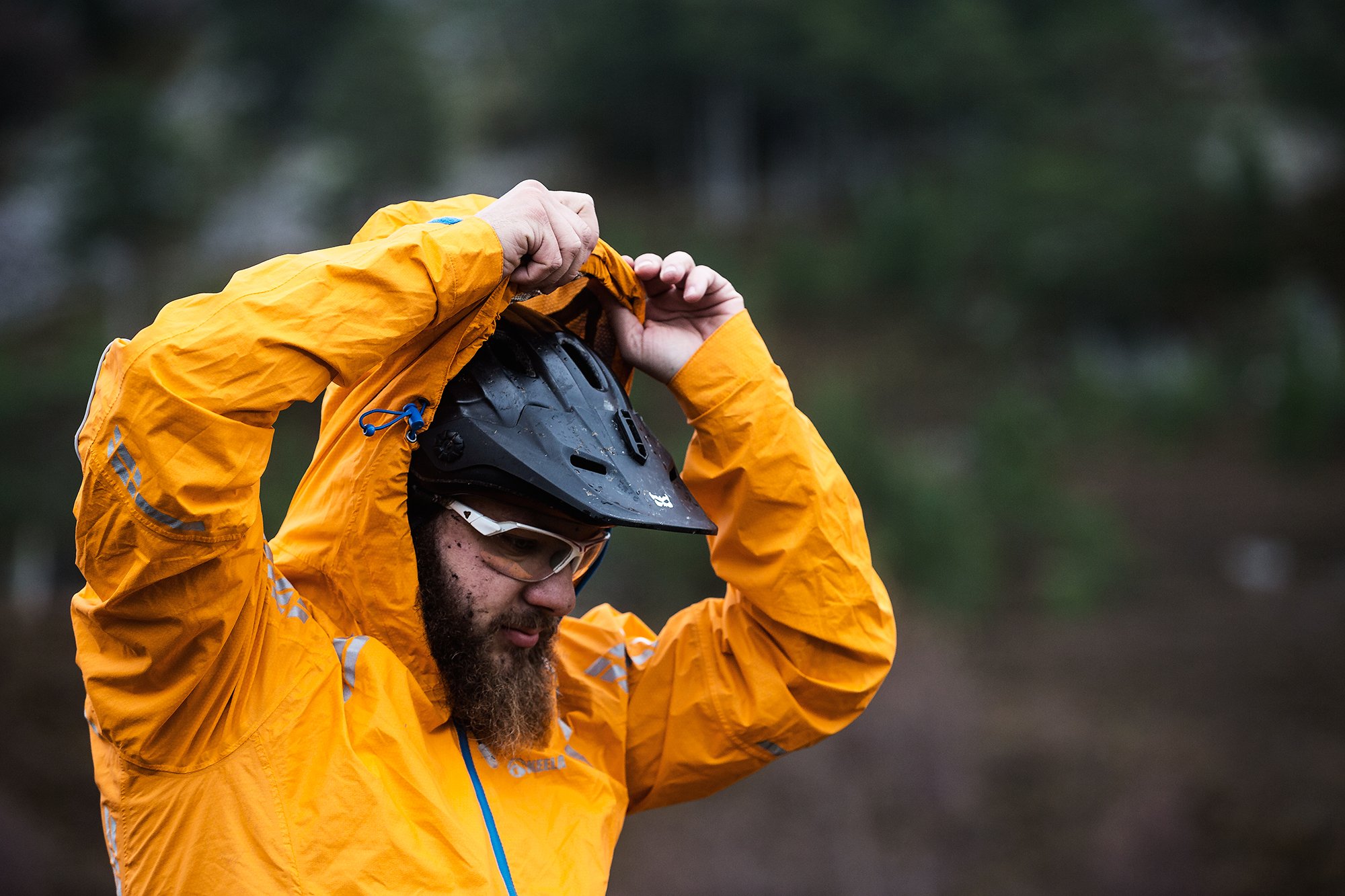Crucial Tactic: Get the Right Gear
Mountain biking in Scotland. Photo: Ross Bell
Outdoor sports websites have an almost pathological obsession with gear. I experienced this first-hand: I worked for a mountain biking website for seven years, including a 5-year stint as the Editor in Chief. Despite my best efforts to inject as much true storytelling into our editorial calendar as possible, product and tech content continued to dominate. Mountain biking is what we call a "product-heavy niche," but this trend is prevalent even in product-lite sports, such as trail running.
It's no secret why: selling things is how you make money. Brands and companies make products to sell to you, the consumer, and the media outlets make money by selling advertising space for those same products back to the brands. It's not necessarily insidious or malicious, but it is a consumerism-based economy. And as you might have gathered by now, I think that pursuing minimalism and fleeing from this consumer hampster wheel is one of the most vital keys that can unlock dramatic freedom in our lives.
So, I've hesitated to write about technical gear topics here on Outside 365. For one, I make no money on this side project, which frees me from the need to write about such things. For another, I think there are so many fascinating topics that need to be discussed that I'm not worried about running out of content anytime soon. But even so, in my own life, when the topic of conversation switches to being active outside every day, invariably one of the first questions that I get is about gear.
It's Not About the Gear
To date, I've written 11 installments in my Crucial Tactics series—tactics that you can use to go from zero to being outside and active every single day, for 365 days straight. Yet despite all of the challenges that need to be overcome, and all of the tactics that you can utilize to do exactly that, so, so many people tend to focus on the gear. They seem to think that they can't go outside or be active until they have the perfect shoes, the attractive-looking athletic clothing, the perfectly-fitted backpack, the premier $10,000 mountain bike... the list goes on and on.
This is why I've focused on embracing discomfort, not waiting for the perfect moment, starting small, and so many more topics. Because you don't need to buy a single thing to complete the Outside 365 challenge. You can go outside and be active every single day with the shoes and the clothes that you're wearing right now.
Don't believe me? Pick up Born to Run and read about the world's best distance runners, the Tarahumara tribe that runs dozens of miles per day, wearing little clothing, with scraps of worn-out tires strapped to the soles of their feet as their only protection.
And yet...
And yet, as I've shared the Outside 365 concept with people who aren't as inculcated into the outdoor sports scene, I've been both fascinated and shocked by the lack of basic knowledge of the simple clothing and gear that can reduce pain and help prevent injury. Take, for example, the topic of shoes.
During one of my stints as an international digital nomad, I was sitting in a cafe in Barcelona chatting with some other nomad friends over steaming shots of espresso, and the topic of footwear came up. I commented that I only wear high-quality trail running shoes when I travel. When traveling car-free through Europe and seeing the sights in an urban city, I can easily walk over 10 miles a day on hard pavement—distances that can be detrimental to your feet and, subsequently, the entire chain of muscles, joints, and ligaments up through your body. One of the main problems is the static, unyielding paved surface, which the Tarahumara don't have to contend with.
I learned from these female friends that they had only ever considered shoes to be a fashion item. They shared with me that shoes are marketed to women as a fashion accessory and that the only consideration is how they look in a given situation—not how they perform. In contrast, I explained how a high-quality pair of shoes is the most critical piece of gear that you probably ought to spend money on, and how they serve to prevent pain and long-term injury.
One final consideration: if you're truly not going to wait for the perfect moment and are bracing yourself to go outside no matter the weather, it makes it so much easier if you're fully prepared for the weather. As the Scandinavian proverb goes, there's no such thing as bad weather, only bad clothing. So at the risk of stating the obvious, I'll share some of the most critical pieces of gear that can help you accomplish the Outside 365 challenge.
Crucial Gear for Going Outside Every Single Day
Since Outside 365 is sport agnostic, the exact gear that you'll need can vary dramatically depending on which sport you spend the most time participating in. However, most people—no matter which sport is their primary passion—will inevitably spend many of their days walking or hiking to fill an uninterrupted 365-day streak. It is the easiest, most accessible way to get outside. Here are the basic yet vital pieces of gear that can enable your success.
High-Quality, Supportive Shoes
As I already noted above, a pair of high-quality supportive shoes is the number one piece of gear that can prevent pain and long-term overuse injuries, especially if you're significantly increasing the amount of time that you spend on your feet. The exact brand or type of shoes isn't necessarily important, but what is important is that the shoes are supportive and performance-oriented... not fashion items. They should fit well and feel comfortable.
Personally, I almost exclusively wear trail running shoes of some sort. I've rotated through a variety of styles and brands, but I tend to stick to trail running shoes.
The key benefits provided by trail running shoes include:
Supportive and performance-oriented.
Light enough for everyday wear, eg. while walking, shopping, etc.
Rugged and durable enough for outdoor adventures, eg. an epic hike.
More grip and traction in dirt than a road running shoe.
Relatively easy to find and purchase—many stores carry them.
Not cheap, but also not nearly as expensive as some hiking boots
If you don't head onto dirt very often, you could, of course, buy a road running shoe.
You can find high-quality trail running shoes at most running stores or at outdoor chain stores such as REI. I would recommend avoiding big box stores, and instead, spend a bit more money on a high-quality pair of shoes. Based on current market trends, I budget about $130 for a pair of trail running shoes, but they range in price depending on the brand from about $100-$150.
Synthetic Clothing
Photo: Christine Henry
While you don't need special clothing to cover one mile in your neighborhood, if you want to venture a bit further afield, purchasing synthetic or wool clothing is vital. As another proverb goes, "cotton kills." When cotton clothing gets wet (such as by sweating), it loses any thermal insulation properties. When that happens, you can quickly become chilled to the bone, causing hypothermia and death in the worst-case scenario.
Synthetic clothing such as polyester, and natural wool fibers, both retain some thermal insulation even when wet. The amount of insulation is generally reduced, but if you find yourself in a survival situation, these fabrics could save your life. Even when you aren't in a survival situation, polyester and wool fabrics work to wick the moisture away from your body and then dry much faster than cotton. This can make the difference between feeling like you're hiking around in a wet swimsuit and feeling light, airy, and dry. Moisture-wicking clothing is much more comfortable while exercising.
I specifically mentioned "synthetic clothing" in the heading, as polyester is cheaper and easier to find than high-quality wool outdoor clothing. You also don't need to purchase expensive hiking brands from REI—you can press into service no-name polyester t-shirts, compression shorts from Walmart, nylon gym shorts, etc. In fact, you might have many of these items in your closet already.
Warm Layers
You'll inevitably be faced with cold temperatures at some point during your Outside 365 journey. The only question is, how cold will it get, and for how long?
If you live in Arizona, buying a puffy jacket for the occasional chilly morning might be enough. But if you live in Alaska, well... you're going to have to completely outfit yourself for an entirely different type of outdoor life.
Yet again, you might already own the clothes necessary to combat the cold... but not everybody does. As I travel through places like California and Arizona, I'll often see people wearing two or three cotton hoodies as their means of protection against the cold. See above for why that's a bad idea.
Warm clothes also include accessories like a hat, gloves, socks, and base layers.
Rain Jacket
Rain gear is critical when mountain biking in Scotland in November. Photo: Ross Bell.
If you live in the desert, you might very well be able to get away without owning a rain jacket. But in most other climates, owning a high-quality rain jacket (and rain pants, if you want to get fancy) will help you head out the door even when it's pouring rain outside.
Sure, if it's a light drizzle, you can get away without a special rain layer. In fact, getting a little wet and a little uncomfortable every now and then might help you learn to embrace discomfort even better.
But it's almost a guarantee that you'll face a few days of 40-degree temperatures and pouring rain that would soak you to the bone without a rain jacket. In such a situation, hypothermia is a very real danger. During a recent fall season that I spent in Oregon, I had to resign myself to many, many days spent trudging through the pouring rain.
A high-quality rain jacket can make all the difference.
Parting Thoughts
Is there more gear you could buy? Yes, of course—the list could go on and on. If you need help gearing up for a specific adventure and you don't know where to start, head to your local outdoor gear store or the REI nearest to you. The salespeople there are well-equipped with the knowledge to help you choose the right gear for your next epic adventure.
But the point of Outside 365 is that we reap massive benefits from going outside every single day, not just when we're heading out on a massive adventure. And you don't need an expensive backpack to do that. Instead, the right shoes and some commonsense clothing items can get you a long, long way down the road to reaching your Outside 365 goal.
Even More Crucial Tactics
Check out the other installments in the Crucial Tactics series here:





